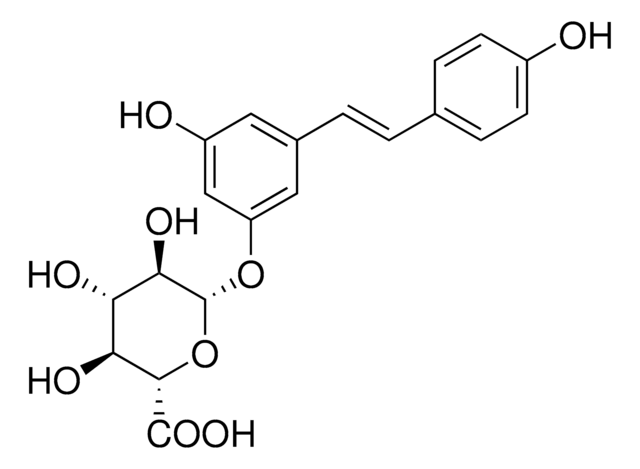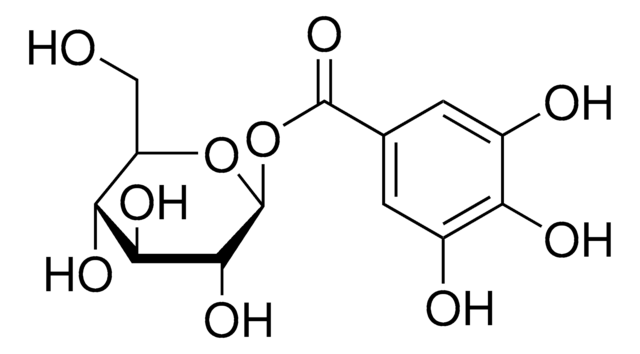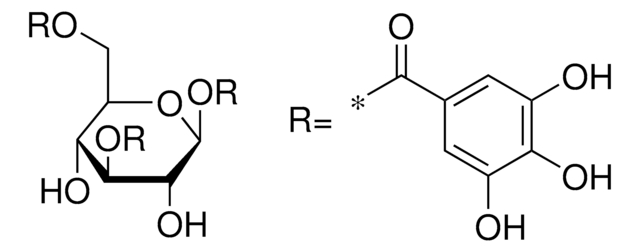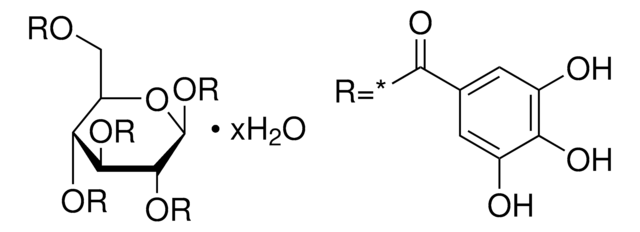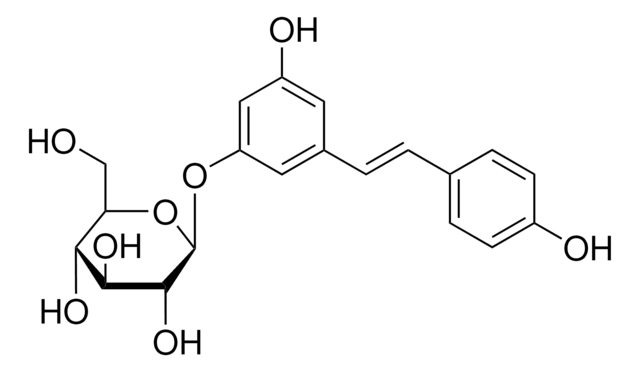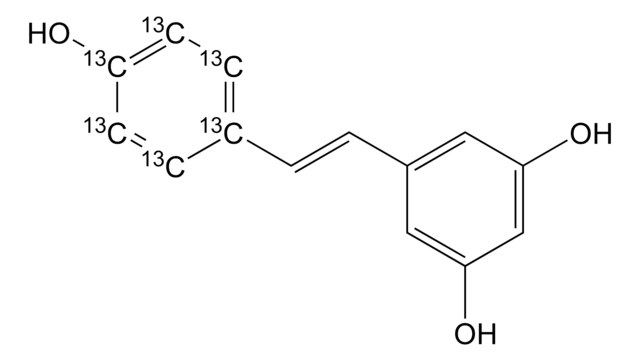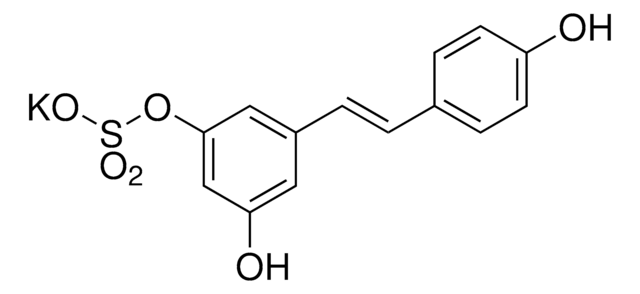SMB00956
trans-Resveratrol 4′-O-β-D-glucuronide
≥95% (HPLC)
Synonyme(s) :
Resveratrol 4′-O-glucuronide, Resveratrol-4′-O-D-Glucuronide, trans-Resveratrol 4′-O-glucuronide, trans-Resveratrol 4′-glucuronide
About This Item
Produits recommandés
Niveau de qualité
Pureté
≥95% (HPLC)
Forme
solid
Couleur
white to beige
Température de stockage
2-8°C
InChI
1S/C20H20O9/c21-12-7-11(8-13(22)9-12)2-1-10-3-5-14(6-4-10)28-20-17(25)15(23)16(24)18(29-20)19(26)27/h1-9,15-18,20-25H,(H,26,27)
Clé InChI
CDEBVTGYVFHDMA-UHFFFAOYSA-N
Description générale
Application
Actions biochimiques/physiologiques
Autres remarques
Code de la classe de stockage
11 - Combustible Solids
Classe de danger pour l'eau (WGK)
WGK 3
Choose from one of the most recent versions:
Certificats d'analyse (COA)
Don't see the Right Version?
If you require a particular version, you can look up a specific certificate by the Lot or Batch number.
Déjà en possession de ce produit ?
Retrouvez la documentation relative aux produits que vous avez récemment achetés dans la Bibliothèque de documents.
Notre équipe de scientifiques dispose d'une expérience dans tous les secteurs de la recherche, notamment en sciences de la vie, science des matériaux, synthèse chimique, chromatographie, analyse et dans de nombreux autres domaines..
Contacter notre Service technique